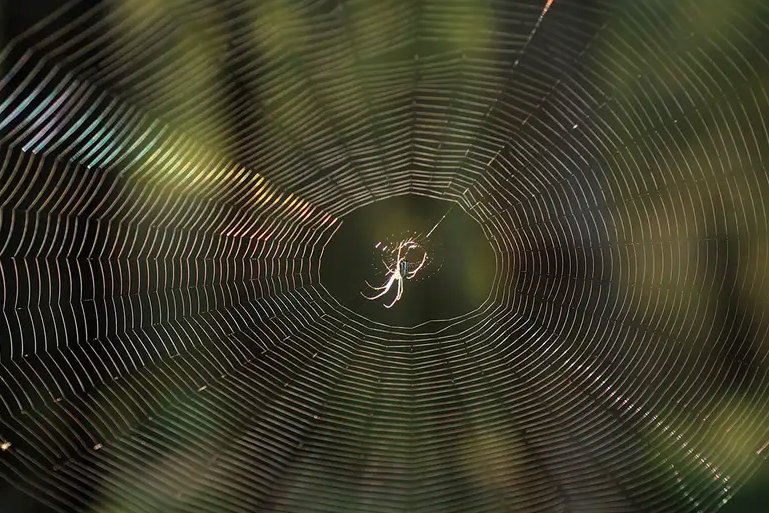How do spiders spin webs?
Answering this question can be tricky -- and sticky! Spiders use a unique, sometimes sticky material called spider silk to build intricate webs.
Because of silk’s molecular structure, it is both flexible and strong. In fact, spider silk is stronger than steel! Spider silk is produced by organs called spinnerets on a spider’s abdomen (the back half of their body). There are seven kinds of spinnerets that can make many different kinds of silk. Silk threads can be thick, thin, dry, sticky, beaded, or smooth. No spider has all seven types of spinnerets, but “orb weave” spiders, which are found commonly in the US, have five.
When most people think of a spider web, they picture the kind of web made by orb weave spiders. To build their web, orb weave spiders will first send out a line of silk. Silk is very lightweight and will get caught and carried by the wind until it snags on a branch, leaf, rock or another manmade surface like a house or telephone pole. The spider will tug on the line to make sure it’s firmly attached, drop another line to form a “Y” shape, and then build more supporting “radial lines” coming out from the center of the web.
Next, the spider will make many circles that connect all the radial lines, starting from the inside and moving out, using dry silk. Finally, the spider will lay down one more layer of circles from the outside in, using thick, sticky silk. These “orb lines” are used to catch prey. Sometimes spiders eat their webs when they are finished with them so they can reuse the materials to make more.
Why do spiders spin webs? Spiders use webs to catch prey and for protection. Spiders often sit and wait in the middle of their web. Here, they can feel vibrations of different creatures hitting their web, which alerts them both of nearby predators and prey. If prey, like insects, get stuck in their web, spiders will move in, bite, and eat them.
There are over 45,000 species of spiders in the world, and many of them use their silk in different ways. Some make webs that are three-dimensional shapes like pyramids, funnels, or tubes! Other spiders don’t spin webs at all but use their silk for other things altogether.
Some spiders throw nets or lines of silk to catch their prey. Silk can also be used as molting or mating platforms. Nearly all spiders wrap their eggs in silk to protect them. Some spiders can travel thousands of meters by sending out several threads in a balloon-like structure and riding on the wind. Jumping spiders also use silk for protection during the day, hiding in a silk structure that almost looks like a sleeping bag!
Spiders are extremely common creatures, living in almost every single habitat on earth. Next time you’re outside (or even exploring inside!), look closely and see if you can spot a spider or its web!
Picture Source: newscientist.com

